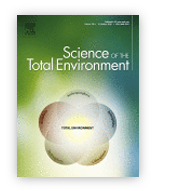
Research papers of the month – February
We present the highest-score research papers of February.
Natalia Wiktorczyk-Kapischke, Katarzyna Grudlewska-Buda, Ewa Wałecka-Zacharska, Joanna Kwiecińska-Piróg, Laura Radtke, Eugenia Gospodarek-Komkowska, Krzysztof Skowron
SARS-CoV-2 in the environment - Non-droplet spreading routes
Natalia Wiktorczyk-Kapischke, Katarzyna Grudlewska-Buda, Ewa Wałecka-Zacharska, Joanna Kwiecińska-Piróg, Laura Radtke, Eugenia Gospodarek-Komkowska, Krzysztof Skowron
Science of the Total Environment
 The new coronavirus SARS-CoV-2, first identified in Wuhan (China) in December 2019, represents the same family as the Serve Acute Respiratory Syndrome Coronavirus-1 (SARS-CoV-1). These viruses spread mainly via the droplet route. However, during the pandemic of COVID-19 other reservoirs, i.e., water (surface and ground), sewage, garbage, or soil, should be considered. As the infectious SARS-CoV-2 particles are also present in human excretions, such a non-droplet transmission is also possible. A significant problem is the presence of SARS-CoV-2 in the hospital environment, including patients' rooms, medical equipment, everyday objects and the air. Relevant is selecting the type of equipment in the COVID-19 hospital wards on which the virus particles persist the shortest or do not remain infectious. Elimination of plastic objects/equipment from the environment of the infected person seems to be of great importance. It is particularly relevant in water reservoirs contaminated with raw discharges. Wastewater may contain coronaviruses and therefore there is a need for expanding Water-Based Epidemiology (WBE) studies to use obtained values as tool in determination of the actual percentage of the SARS-CoV-2 infected population in an area. It is of great importance to evaluate the available disinfection methods to control the spread of SARS-CoV-2 in the environment. Exposure of SARS-CoV-2 to 65–70% ethanol, 0.5% hydrogen peroxide, or 0.1% sodium hypochlorite has effectively eliminated the virus from the surfaces. Since there are many unanswered questions about the transmission of SARS-CoV-2, the research on this topic is still ongoing. This review aims to summarize current knowledge on the SARS-CoV-2 transmission and elucidate the viral survival in the environment, with particular emphasis on the possibility of non-droplet transmission.
The new coronavirus SARS-CoV-2, first identified in Wuhan (China) in December 2019, represents the same family as the Serve Acute Respiratory Syndrome Coronavirus-1 (SARS-CoV-1). These viruses spread mainly via the droplet route. However, during the pandemic of COVID-19 other reservoirs, i.e., water (surface and ground), sewage, garbage, or soil, should be considered. As the infectious SARS-CoV-2 particles are also present in human excretions, such a non-droplet transmission is also possible. A significant problem is the presence of SARS-CoV-2 in the hospital environment, including patients' rooms, medical equipment, everyday objects and the air. Relevant is selecting the type of equipment in the COVID-19 hospital wards on which the virus particles persist the shortest or do not remain infectious. Elimination of plastic objects/equipment from the environment of the infected person seems to be of great importance. It is particularly relevant in water reservoirs contaminated with raw discharges. Wastewater may contain coronaviruses and therefore there is a need for expanding Water-Based Epidemiology (WBE) studies to use obtained values as tool in determination of the actual percentage of the SARS-CoV-2 infected population in an area. It is of great importance to evaluate the available disinfection methods to control the spread of SARS-CoV-2 in the environment. Exposure of SARS-CoV-2 to 65–70% ethanol, 0.5% hydrogen peroxide, or 0.1% sodium hypochlorite has effectively eliminated the virus from the surfaces. Since there are many unanswered questions about the transmission of SARS-CoV-2, the research on this topic is still ongoing. This review aims to summarize current knowledge on the SARS-CoV-2 transmission and elucidate the viral survival in the environment, with particular emphasis on the possibility of non-droplet transmission.
10.1016/j.scitotenv.2021.145260










